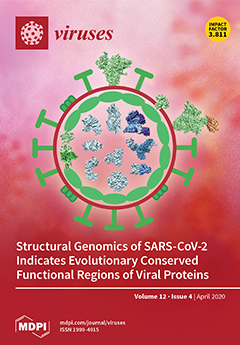We previously identified Sclerotinia sclerotiorum negative-stranded virus 1 (SsNSRV-1), the first (−) ssRNA mycovirus, associated with hypovirulence of its fungal host
Sclerotinia sclerotiorum. In this study, functional analysis of Open Reading Frame Ι (
ORF Ι) of SsNSRV-1 was performed. The
[...] Read more.
We previously identified Sclerotinia sclerotiorum negative-stranded virus 1 (SsNSRV-1), the first (−) ssRNA mycovirus, associated with hypovirulence of its fungal host
Sclerotinia sclerotiorum. In this study, functional analysis of Open Reading Frame Ι (
ORF Ι) of SsNSRV-1 was performed. The integration and expression of
ORF Ι led to defects in hyphal tips, vegetative growth, and virulence of the mutant strains of
S. sclerotiorum. Further, differentially expressed genes (DEGs) responding to the expression of
ORF Ι were identified by transcriptome analysis. In all, 686 DEGs consisted of 267 up-regulated genes and 419 down-regulated genes. DEGs reprogramed by ORF Ι were relevant to secretory proteins, pathogenicity, transcription, transmembrane transport, protein biosynthesis, modification, and metabolism. Alternative splicing was also detected in all mutant strains, but not in hypovirulent strain AH98, which was co-infected by SsNSRV-1 and Sclerotinia sclerotiorum hypovirus 1 (SsHV-1). Thus, the integrity of SsNSRV-1 genome may be necessary to protect viral mRNA from splicing and inactivation by the host. Taken together, the results suggested that protein ORF Ι could regulate the transcription, translation, and modification of host genes in order to facilitate viral proliferation and reduce the virulence of the host. Therefore,
ORF Ι may be a potential gene used for the prevention of
S. sclerotiorum.
Full article






